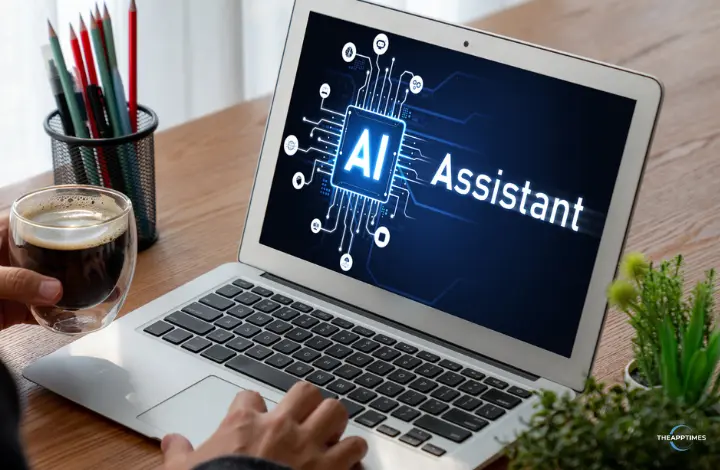Imagine having your own digital assistant — one that organizes your day, summarizes emails, answers questions, and automates repetitive tasks — without writing a single line of code. Sounds futuristic? Not anymore. Thanks to platforms like ChatGPT, Poe, Zapier, and Notion, you can now build your own personal AI assistant that’s completely tailored to your workflow. In this guide, you’ll learn how to create one — even if you’ve never written code before.
What Exactly Is a Personal AI Assistant?
A personal AI assistant is a virtual helper powered by artificial intelligence. It can understand your commands, process information, and take action — from writing blog posts and scheduling tasks to summarizing documents.
Unlike Siri or Alexa, which are tied to ecosystems, your own AI assistant is fully customizable. You decide its personality, purpose, and capabilities — and it can evolve with your needs.
Before you start building youw own personal assistant, decide what you want it to do.

Define Your Assistant’s Purpose
Some ideas include:
- Productivity assistant: Summarizes emails and plans your day.
- Content creator: Generates blog ideas, captions, or scripts.
- Research helper: Finds and summarizes online information.
- Study partner: Explains topics and tracks your learning.
A clear purpose helps you pick the right platform and integrations.
Choose Your Base Platform
Here’s a quick comparison of popular no-code platforms you can use to build your assistant:
| Platform | Key Features | Best For |
| ChatGPT Custom GPTs | Upload files, customize prompts, memory & tone | Writers, learners, small teams |
| Poe Bots | Use GPT-4, Claude, or Gemini models; share bots easily | Experimenters, educators |
| Replit Agents | Build task-based AI with workflows | Entrepreneurs, devs |
| Zapier | Automate 6,000+ apps with triggers & actions | Everyday automation |
| Make (Integromat) | Visual workflow builder with logic | Teams & advanced users |
*Pro tip:* Start with ChatGPT’s Custom GPTs or Poe Bots — they’re the easiest for beginners.
Connect Your Assistant to Everyday Apps
A great assistant doesn’t just chat — it takes action. Tools like Zapier, Make, and IFTTT let you connect your AI to your favorite apps and automate tasks.
- When you get a new email ? summarize it in Notion.
- When a meeting is added to Google Calendar ? create a checklist.
- When a file is uploaded ? get a summary in Slack.
You can create these automations without any coding.
Add Memory and Data Access
To make your assistant more personal:
- Link it to a Notion or Google Sheets database for task tracking.
- Upload documents (in ChatGPT) to give it context.
- Connect APIs or feeds for real-time data (like news or stock prices).
Over time, your AI will “remember” preferences and respond more intelligently.
Protect Your Privacy
Your AI assistant might handle personal or work-related information, so always:
- Avoid uploading confidential or financial data.
- Use trusted services like OpenAI, Poe, and Zapier.
- Disable model training where possible.
- Review app permissions regularly.
Security is as important as functionality.
Quick Start Example: “My Daily Productivity Bot”
Goal: Manage daily tasks and summarize emails.
Platform: ChatGPT Custom GPT + Zapier
Connected Apps: Gmail, Notion, Google Calendar
Example Prompt Template:
“You are my personal productivity assistant. Every morning, check my Gmail for new messages, summarize key tasks, and update my Notion to-do list. Keep responses short and friendly.”
Outcome:
Each morning, you’ll get a summary of emails, pending meetings, and top tasks — neatly organized without lifting a finger.
What’s Next for Personal AI Assistants?
The future is even more exciting. Expect:
- Voice and vision features (like ChatGPT’s new voice mode)
- Deeper app integration — your AI will soon book appointments and edit files directly
- Autonomous agents like AutoGPT that can plan multi-step tasks
- On-device AI (e.g., Apple Intelligence, Gemini Nano) for privacy-first setups
In short — your assistant will only get smarter from here.
FAQs: Common Questions About Building AI Assistants
Q1. Can I build an AI assistant for free?
Yes! You can use free versions of Poe, Zapier (basic plan), or ChatGPT’s free tier for limited functionality.
Q2. Will my AI assistant work across devices?
Most tools like ChatGPT, Poe, and Notion sync across devices, so your assistant can work anywhere.
Q3. How do I keep my assistant from forgetting things?
Save important instructions in a Notion or Google Sheet, or use ChatGPT Plus, which supports limited memory features.
Q4. Can I share my assistant with others?
Yes. Both ChatGPT and Poe let you share your custom assistants via links — perfect for teams or classrooms.
Conclusion
Creating your own AI assistant isn’t just a tech experiment — it’s a smarter way to live and work. With no-code tools, anyone can design a helper that plans tasks, writes, summarizes, or learns alongside them. Start small, experiment with integrations, and you’ll soon have a virtual teammate you can’t live without.
Leave a Reply